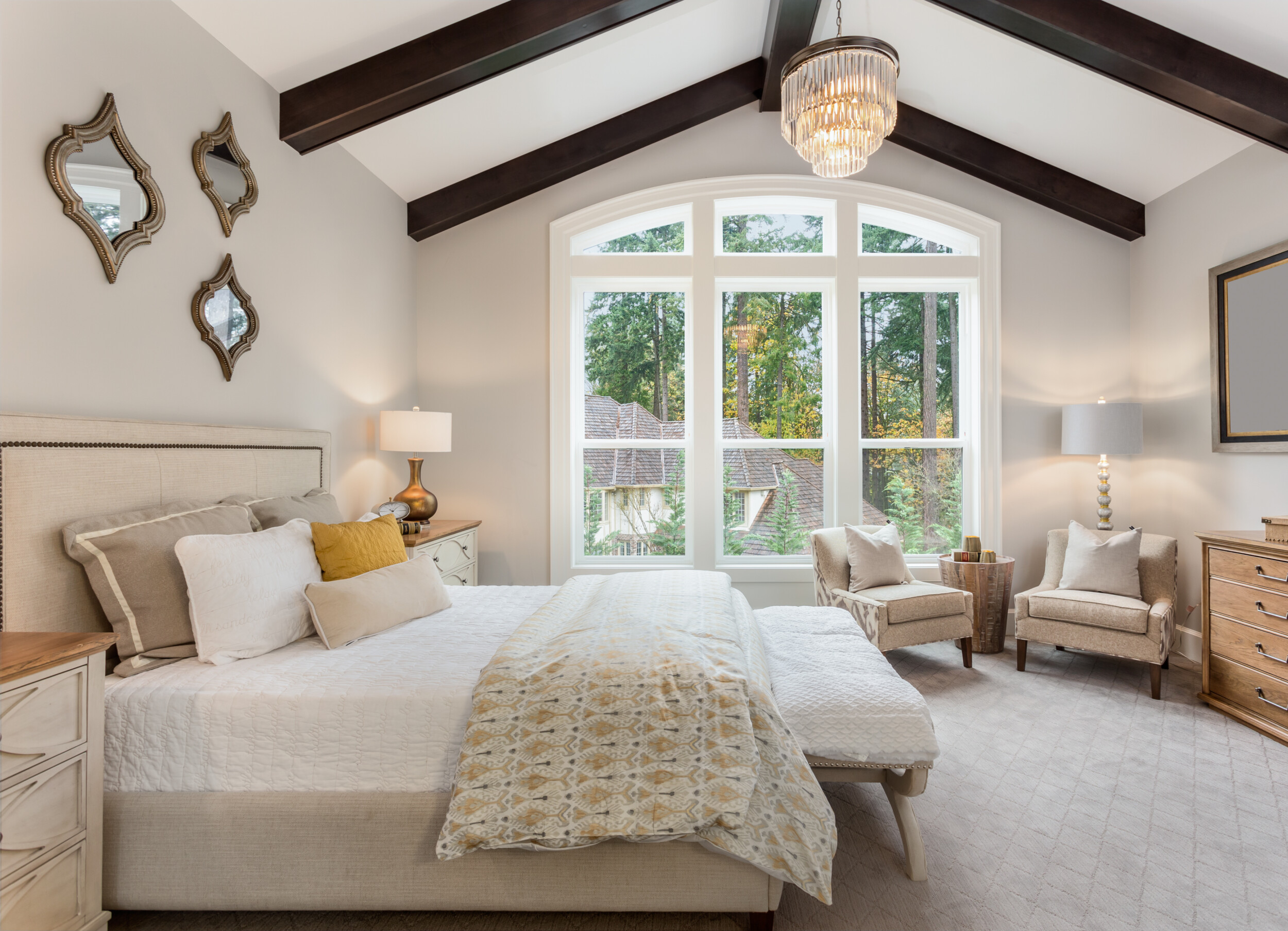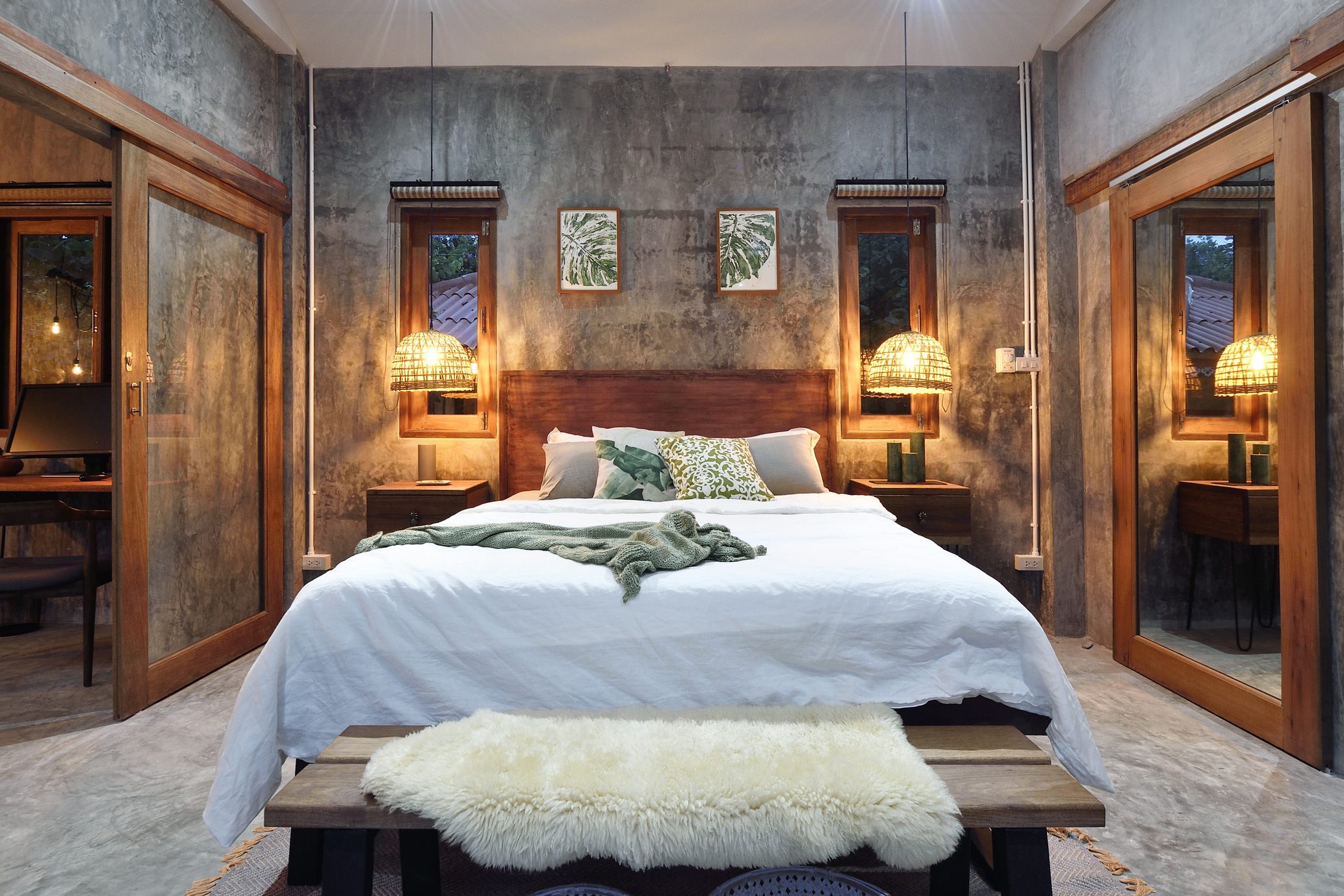Lighting Needs in a Master Bedroom

The master bedroom is a sanctuary, a space for relaxation and rejuvenation. Lighting plays a crucial role in setting the mood and atmosphere of this personal haven. It’s not just about providing enough light to see, but about creating a balanced and functional lighting plan that caters to different activities and moods.
Types of Lighting, Can lights in master bedroom
A well-designed master bedroom lighting plan incorporates three main types of lighting: ambient, task, and accent. These different types of lighting work together to create a versatile and functional space that meets your specific needs.
- Ambient lighting provides general illumination for the entire room. It’s the foundational lighting, creating a base level of brightness that sets the overall mood. Think of it as the “background music” of your lighting scheme. It’s usually soft and diffused, creating a comfortable and inviting atmosphere.
- Task lighting is designed for specific activities, providing focused illumination for tasks like reading, applying makeup, or working on a laptop. It should be brighter than ambient lighting and directed towards the task area, reducing eye strain and fatigue.
- Accent lighting is used to highlight specific features or elements within the room, adding visual interest and depth. This could include artwork, a decorative shelf, or a unique architectural detail. Accent lighting can be dramatic, using spotlights to create a focal point, or subtle, using dimmable LED strips to create a warm glow.
Ideal Light Levels
The ideal light levels for each type of lighting vary depending on personal preference and the specific activity. However, general guidelines can help create a balanced and functional lighting plan.
- Ambient lighting should be soft and diffused, providing a comfortable level of brightness. A good starting point is 10-20 lux, but this can be adjusted based on personal preference and the size of the room.
- Task lighting should be brighter than ambient lighting, providing enough illumination for the specific task. For reading, aim for 50-100 lux, while makeup application may require 200-300 lux.
- Accent lighting can be as bright or as dim as desired, depending on the desired effect. It’s important to choose light sources that complement the overall design of the room and highlight the chosen features.
Lighting Fixtures
There are a wide variety of lighting fixtures available to suit different styles and needs. Here are some examples of specific fixtures suitable for each type of lighting in a master bedroom:
- Ambient lighting:
- Chandeliers: Create a statement piece and provide general illumination, especially in larger master bedrooms. Consider a crystal chandelier for a touch of elegance or a modern, geometric design for a contemporary feel.
- Pendant lights: Offer a versatile option, available in various sizes and styles to suit different aesthetics. They can be hung over a bedside table or placed in the center of the room.
- Flush-mount ceiling lights: A practical and efficient option for smaller bedrooms, providing a clean and minimalist look.
- Task lighting:
- Reading lamps: Essential for bedside tables, providing focused light for reading in bed. Choose a lamp with a adjustable head for optimal light direction.
- Vanity lights: Ideal for makeup application, providing bright and even illumination. Consider a pair of sconces or a vanity mirror with integrated LED lights.
- Under-cabinet lights: If you have a desk or vanity in your bedroom, under-cabinet lights can provide focused task lighting without taking up valuable counter space.
- Accent lighting:
- Track lighting: Allows you to direct light towards specific features, such as artwork or a decorative shelf. They offer flexibility and can be easily adjusted to highlight different elements.
- Recessed lighting: Provides subtle and diffused illumination, perfect for highlighting architectural details or creating a warm and inviting ambiance.
- LED strips: Versatile and energy-efficient, LED strips can be used to create a dramatic effect, highlighting the perimeter of the room or adding a touch of color.
Impact of Lighting on Mood
Lighting plays a significant role in setting the mood and atmosphere of a space. Different types of lighting can evoke different emotions and create a desired ambiance.
- Warm white light (2700-3000K) is often associated with comfort, relaxation, and intimacy. It’s ideal for creating a cozy and inviting atmosphere in the bedroom, perfect for winding down at the end of the day.
- Cool white light (4000-4500K) is more stimulating and energizing, often used in kitchens and offices. While not ideal for the bedroom, it can be used for specific tasks, such as getting ready in the morning.
- Dimmable lighting allows you to adjust the brightness of your lights, creating different moods throughout the day. Dimming the lights in the evening can create a relaxing and romantic ambiance, while brighter lighting can be used for tasks like reading or working.
Lighting Plan for a Master Bedroom
A well-designed lighting plan for a master bedroom should consider the different activities and moods you want to create. Here’s a sample plan that incorporates the different types of lighting discussed:
- Ambient lighting: A central chandelier provides general illumination for the entire room. The chandelier can be a statement piece, reflecting your personal style.
- Task lighting: Reading lamps are placed on both bedside tables, providing focused light for reading in bed. A vanity mirror with integrated LED lights is installed for makeup application.
- Accent lighting: Track lighting is used to highlight artwork above the headboard, creating a focal point. Recessed lighting is installed around the perimeter of the room, providing subtle and diffused illumination, highlighting the architectural details.
Choosing the Right Light Bulbs

Choosing the right light bulbs for your master bedroom is crucial for creating the perfect ambiance and ensuring optimal lighting for various activities. From reading to relaxing, the right light bulbs can make a significant difference in your overall experience.
Light Bulb Types and Their Characteristics
Different types of light bulbs offer distinct advantages and disadvantages. Here’s a breakdown of the most common types:
- Incandescent Bulbs: These traditional bulbs are known for their warm, yellowish light, but they are energy inefficient and have a short lifespan.
- LED Bulbs: LED bulbs are highly energy-efficient, boasting a long lifespan and a wide range of color temperatures. They are also known for their durability and instant-on feature.
- CFL Bulbs: CFL bulbs, or compact fluorescent lamps, offer better energy efficiency than incandescent bulbs and a longer lifespan. However, they contain mercury and can take some time to reach full brightness.
Best Light Bulbs for Master Bedroom Lighting
The best type of light bulb for your master bedroom depends on the type of lighting fixture and the desired ambiance:
- Overhead Lighting: LED bulbs are the ideal choice for overhead lighting, providing ample brightness while being energy-efficient. They offer a wide range of color temperatures, allowing you to customize the ambiance.
- Reading Lamps: For reading, opt for LED bulbs with a higher color temperature (around 4000K) to provide clear and bright light.
- Nightstands: LED bulbs with a warm white color temperature (around 2700K) are perfect for nightstands, creating a relaxing and inviting atmosphere.
- Accent Lighting: LED bulbs with a warm white color temperature (around 2700K) can also be used for accent lighting, highlighting artwork or architectural features.
Choosing the Right Color Temperature
Color temperature, measured in Kelvin (K), determines the warmth or coolness of the light. Here’s a guide to choosing the right color temperature for different moods:
- Warm White (2700K-3000K): Creates a cozy and relaxing atmosphere, ideal for bedrooms and living rooms.
- Neutral White (3500K-4500K): Provides a bright and balanced light, suitable for tasks like reading and working.
- Cool White (5000K-6500K): Emits a bright, bluish-white light, often used in kitchens and bathrooms.
Benefits of Dimmable Light Bulbs
Dimmable light bulbs offer greater control over the ambiance in your master bedroom:
- Create Different Moods: Dim the lights for a romantic evening or brighten them up for a morning routine.
- Reduce Energy Consumption: Dimming the lights reduces energy consumption, saving you money on your electricity bill.
- Protect Your Eyes: Dimming the lights at night can help protect your eyes from harsh light, promoting better sleep.
Light Bulb Comparison Table
| Type | Pros | Cons | Incandescent | Warm, yellowish light | Energy inefficient, short lifespan | LED | Energy efficient, long lifespan, wide range of color temperatures, instant-on | More expensive upfront | CFL | More energy efficient than incandescent bulbs, longer lifespan | Contain mercury, take time to reach full brightness |
|---|
Master Bedroom Lighting Design Trends: Can Lights In Master Bedroom

Master bedroom lighting design has evolved beyond mere functionality, embracing trends that enhance aesthetics, comfort, and ambiance. Let’s explore the latest trends shaping how we illuminate our personal sanctuaries.
Smart Lighting
Smart lighting technology is transforming the way we interact with our bedroom lighting. It allows for personalized lighting experiences, offering control over brightness, color temperature, and even scheduling. Smart bulbs, connected to a smart home hub or app, enable you to adjust the lighting remotely, create customized scenes, and automate lighting routines. Imagine waking up to a soft, warm glow or setting the mood for a relaxing evening with just a voice command.
Pendant Lights
Pendant lights are making a statement in master bedrooms, adding a touch of elegance and sophistication. Suspended from the ceiling, they create a focal point and provide ample illumination. Pendant lights come in various styles, from sleek and minimalist to ornate and dramatic, allowing you to choose the perfect match for your bedroom’s decor.
Statement Chandeliers
A statement chandelier can instantly elevate the ambiance of a master bedroom. Chandeliers with intricate designs, sparkling crystals, or unique shapes add a touch of luxury and grandeur. They serve as a central lighting source, casting a warm and inviting glow over the entire space.
Natural Light Integration
Maximizing natural light is crucial for creating a bright and airy master bedroom. Large windows, skylights, and strategically placed mirrors can help to flood the room with sunlight. Consider incorporating sheer curtains or blinds to control the amount of light entering the room throughout the day.
Lighting for Feature Enhancement
Lighting can be strategically used to highlight specific features in your master bedroom. For example, you can use accent lighting to illuminate artwork, a headboard, or a reading nook. Recessed lighting can be used to highlight architectural details or create a sense of depth.
Creating a Sense of Space
Lighting can also be used to create the illusion of more space in a master bedroom. Using a combination of ambient, task, and accent lighting can help to define different areas within the room and create a sense of flow. For instance, using dimmer switches to adjust the brightness of overhead lights can make a small bedroom feel more spacious.
Can lights in master bedroom – Yo, can lights in the master bedroom are totally basic, but like, if you’re going for a vibe, you gotta spice it up. Purple and black decorations for your bedroom are totally rad, and they’re super easy to find, check out this site for some inspo.
Once you’ve got the right decor, you can even use the can lights to create some cool shadows, making your room even more lit.
Yo, so like, if you’re thinking about putting can lights in your master bedroom, you gotta think about the vibe you want. Like, do you want it to feel chill and cozy or more like a super bright, energizing space?
That’s where warm vs cool light for bedroom comes in. Warm light is all about that relaxed feel, while cool light is more like, “let’s get this day started!” Can lights can totally rock either vibe, depending on the bulbs you choose.
